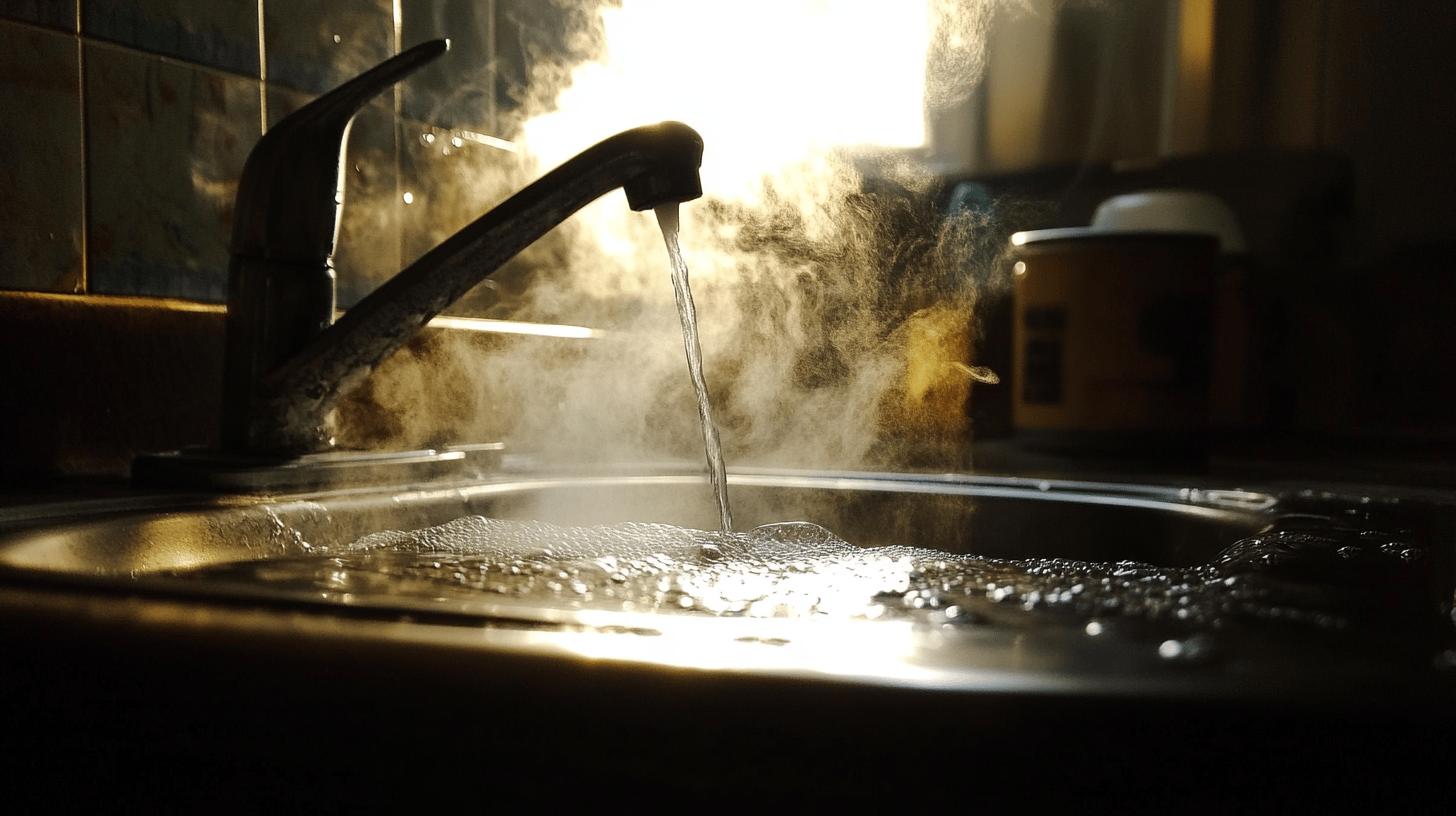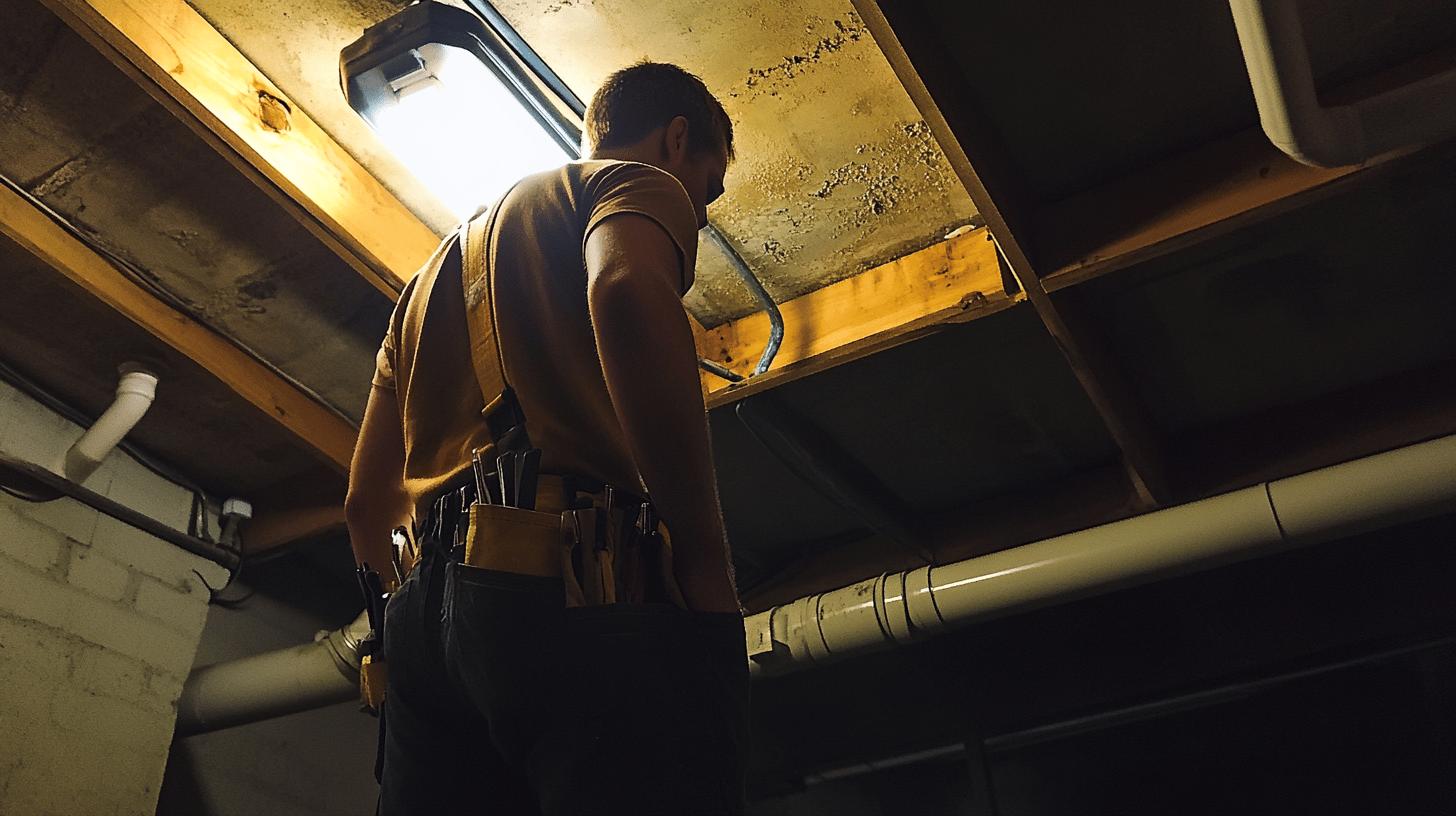TL;DR:
- Purpose of Plumbing Ventilation: Ensures efficient drainage, prevents vacuums, releases sewer gases, and maintains air pressure.
- Types of Vents:
- True Vent: Vertical pipe, balances air pressure, releases gases.
- Common Vent: Serves multiple fixtures, cost-effective, prevents imbalances.
- Air Admittance Valves (AAVs): Allow air entry while blocking gases, ideal for tight spaces.
- Maintenance Tips: Regular inspection, debris removal, use of plungers and augers, hot water flushes, protective covers.
- Symptoms of Poor Ventilation: Slow drainage, gurgling sounds, frequent clogs, sewer gas presence.
- Health Risks: Sewer gases can cause respiratory issues.
- Professional Help: Ensures compliance with codes and proper installation to prevent issues.
Did you know that keeping your home smelling fresh and avoiding drainage issues isn’t just about having good pipes? Proper ventilation plays a huge role, too! Many people don’t realize how important ventilation is in plumbing, but it’s key for a healthy indoor environment. Ventilation systems, or vent stacks, let air into drainpipes, which helps prevent vacuums and safely releases sewer gases. In this article, you’ll learn how ventilation works in plumbing and why it’s super important for comfort and efficiency.
Understanding Ventilation in Plumbing
Plumbing ventilation is super important for making sure your drainage system works well and safely. Vent pipes, also known as vent stacks, let air into drainpipes, stopping vacuums that can mess up how wastewater flows. These vents help keep air pressure balanced, so water drains smoothly. Plus, they safely release sewer gases outside, which is essential for keeping your home healthy and free of bad odors.
-
Preventing Vacuum Formation: Vents let air into the system, avoiding vacuums and ensuring smooth water flow.
-
Balancing Air Pressure: They keep air pressure balanced in pipes, aiding efficient drainage.
-
Releasing Sewer Gases: Vents safely let sewer gases escape outdoors, keeping indoor spaces safe.
-
Reducing Odors: By managing gas release, vents keep the home odor-free.
-
Supporting System Longevity: Good ventilation reduces pipe stress, improving durability.
Good plumbing ventilation is important not just for efficiency, but also for your health and comfort. If there’s not enough venting, it can cause pressure problems that lead to slow drainage, clogs, and bad smells. Plus, sewer gas buildup can be harmful if it isn’t vented outside. So, keeping your plumbing well-ventilated helps prevent these issues and makes your system last longer.
Components and Types of Plumbing Vent Systems

A plumbing vent system is essential for keeping air pressure balanced in drainage systems. It consists of vent pipes and vent stacks that let air into the plumbing while removing gases and odors. Unlike drain pipes that carry waste and water, vent pipes focus on airflow and prevent vacuums from forming.
True Vent
The vent pipe plays a crucial role in plumbing systems. It’s a vertical pipe that connects to the drain line and extends through the roof. This allows air to enter and sewer gases to escape, helping keep air pressure balanced and ensuring everything operates smoothly.
Common Vent
A common vent is great for multiple fixtures. It usually connects to fixtures on opposite sides of a wall that share a drain line. This setup allows air to flow, which prevents pressure imbalances and drainage problems. Plus, by serving several fixtures, it cuts down on extra piping, making it a cost-effective and space-saving solution.
Air Admittance Valves
Air admittance valves (AAVs) are super useful when traditional venting isn’t an option. These mechanical valves allow air in but keep sewer gases out. They’re perfect for renovations or small spaces, providing flexibility and efficient venting without the need for a lot of extra piping.
| Vent Type | Material | Function |
|———————-|—————|——————————————————–|
| True Vent | Various metals| Balances air pressure, releases sewer gases |
| Common Vent | PVC, ABS | Serves multiple fixtures, prevents pressure imbalances |
| Air Admittance Valve | Plastic | Allows air entry, prevents gas escape, space-efficient |
Common Issues and Maintenance of Plumbing Vents
Venting problems can mess with your plumbing efficiency. The biggest issue is blockages caused by snow, leaves, and nests. These blockages create pressure, leading to slow drainage and clogs. If not fixed, they can make sewer gases back up, causing bad odors and health risks. So, keeping your vent pipes clear is super important for proper airflow.
-
Regular Inspection: Periodically check for visible obstructions or damage.
-
Clear Debris: Use a broom to remove debris like leaves from vent openings.
-
Use a Plunger: A plunger can help dislodge minor clogs blocking airflow.
-
Drain Auger: Employ a drain auger for stubborn clogs in the vent pipe.
-
Hot Water Flush: Pour hot water to dissolve ice or minor blockages.
-
Install Protective Covers: Screens prevent animal entry and debris buildup in vents.
When vent problems get serious, it’s time to call in the pros. Plumbers have the right tools to tackle tough issues and make sure your plumbing works smoothly. Regular maintenance can help prevent future problems and costly repairs, which can extend the life of your plumbing system. Relying on professionals keeps your home healthy and comfortable.
The Impact of Poor Ventilation on Plumbing Systems

What are the signs of bad plumbing ventilation? When your plumbing isn’t ventilated properly, pressure can build up in the drain pipes, leading to problems. You might notice slow drainage, gurgling sounds, or frequent clogs. These issues happen because the air pressure is off, which messes with how water flows. Plus, if air can’t move freely, sewer gases get trapped, making drainage worse and increasing the chance of clogs.
What health risks and odors come from poor ventilation? If vents aren’t doing their job, sewer gases can leak into your home, causing bad smells and health concerns. Gases like methane and hydrogen sulfide can cause respiratory problems if inhaled. Keeping your ventilation system in check is essential for a safe and comfortable living space.
Regulations and Professional Guidance for Plumbing Ventilation
Following local plumbing codes is essential for safe and efficient ventilation systems. These codes outline the types of vents, materials, and installation methods to use. They help prevent gas leaks and maintain proper air balance in your plumbing. By sticking to these regulations, you not only ensure safety but also avoid potential legal problems and expensive repairs.
-
Expertise in Code Compliance: Plumbers know local codes, ensuring systems meet standards.
-
Correct Installation: Plumbers install vents properly, preventing future problems.
-
Access to Tools and Equipment: Professionals use tools unavailable to DIYers, ensuring effective service.
- Safety Assurance: Hiring reduces risks from handling complex tasks and working at heights.
Getting professional help for your plumbing offers long-term benefits. Experts ensure that your vents function properly, keeping sewer gases out of your home. Regular maintenance also extends the life of your system, preventing costly repairs and keeping your living space healthy. When you work with professionals, you can be confident that everything is up to code and that your plumbing is well taken care of.
Final Words
Understanding how ventilation works in plumbing is crucial for keeping your home safe and functional. You’ve learned that vent stacks help with efficient drainage and improve indoor air quality by allowing sewer gases to escape safely. Good plumbing ventilation is essential not just for system efficiency but also for your family’s health. By addressing and maintaining your vent systems with professional help, you can avoid potential problems in the long run. Knowing about ventilation in plumbing allows you to make smart choices for a smoothly running, odor-free home.
FAQ
What types of vents are used in plumbing?
Plumbing vents include true vents, common vents, and air admittance valves. These vents facilitate air circulation in the drainage system, ensuring proper waste flow and expelling sewer gases safely.
What is a plumbing vent diagram?
A plumbing vent diagram illustrates how vent pipes connect with drain pipes and extend to the roof. This helps visualize the path for air movement and gas release.
What are the rules for plumbing venting?
Plumbing venting rules ensure gases exit safely and drain pipes function efficiently. Compliance with local codes is crucial to avoid plumbing issues and health hazards.
Where is a plumbing vent located on the roof?
Plumbing vents typically extend through the roof as vertical pipes known as vent stacks. These release gases and allow fresh air into the drainage system.
How does a vent pipe work for a toilet?
A toilet vent pipe allows air into the drainage system, preventing water traps from being siphoned dry and ensuring efficient waste flow.
Why must plumbing pipes be vented?
Plumbing pipes must be vented to allow air into the drainage system, preventing vacuum formation and facilitating proper waste and water flow.
What occurs if plumbing lacks proper venting?
Without proper venting, plumbing drains could experience air pressure issues, leading to slow drainage, sewer gas odors, and potential health risks.
Do you need to vent every drain in the plumbing system?
Every plumbing fixture drain requires venting to ensure the effective movement of waste and prevention of sewer gas entry into living spaces.
What is a ventilation system in plumbing?
A plumbing ventilation system consists of pipes that allow air into the drainage system and remove sewer gases, maintaining optimal flow and air quality in homes.

